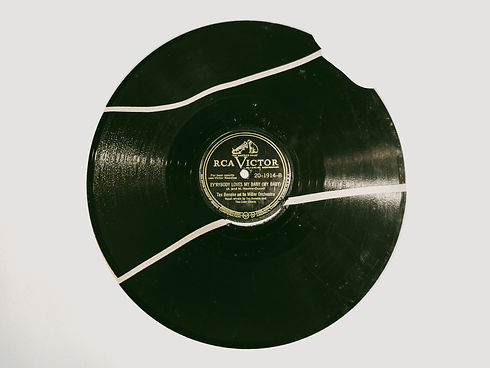
IRELAND'S GRAMOPHONES
MATERIAL CULTURE, MEMORY, AND TRAUMA IN IRISH MODERNISM
Clemson University Press (2021)
Because gramophonic technology grew up alongside Ireland’s progressively more outspoken and violent struggles for political autonomy and national stability, Irish Modernism inherently links the gramophone to representations of these dramatic cultural upheavals. Many key works of Irish literary modernism—like those by James Joyce, Elizabeth Bowen, and Sean O’Casey—depend upon the gramophone for their ability to record Irish cultural traumas both symbolically and literally during one of the country’s most fraught developmental eras. In each work the gramophone testifies of its own complexity as a physical object and its multiform value in the artistic development of textual material. In each work, too, the object seems virtually self-placed—less an aesthetic device than a “thing” belonging primordially to the text. The machine is also often an agent and counterpart to literary characters. Thus, the gramophone points to a deeper connection between object and culture than we perceive if we consider it as only an image, enhancement, or instrument. This book examines the gramophone as an object that refuses to remain in the background of scenes in which it appears, forcing us to confront its mnemonic heritage during a period of Irish history burdened with political and cultural turbulence.
BOOK CHAPTERS
ARTICLES
“...IMAGINE!...WHAT POSITION SHE WAS IN!…”: REVEALING THE FEMALE FORM IN SAMUEL BECKETT’S NOT I
Theatre Topics, 32, no. 2 (2022): 97-107.
“FANNY PRICE’S SOCIAL CARTOGRAPHY IN MANSFIELD PARK"
Nineteenth Century Studies, vol. 29, 2015 [published in 2019], pp. 37-53.
“THE DEATH OF A GRAMOPHONE IN ELIZABETH BOWEN’S THE LAST SEPTEMBER”
Journal of Modern Literature, vol. 40, no. 2, 2017, pp. 132–146
“IRISH LABORERS AND THE PRESTON STRIKE IN ELIZABETH GASKELL’S NORTH AND SOUTH"
New Hibernia Review, vol. 20, no. 4, 2016, pp. 113-127.
“POLITICAL GRAMOPHONIC GENDERING IN G.B. SHAW’S PYGMALION”
Australasian Journal of Irish Studies, vol. 16, no. 1, 2016, pp. 78-92.
"AMELIA’S MANUAL MANIPULATIONS OF THE MAJOR IN THACKERAY’S VANITY FAIR"
The Explicator, vol. 73, no. 2, 2015, pp. 153-56.


